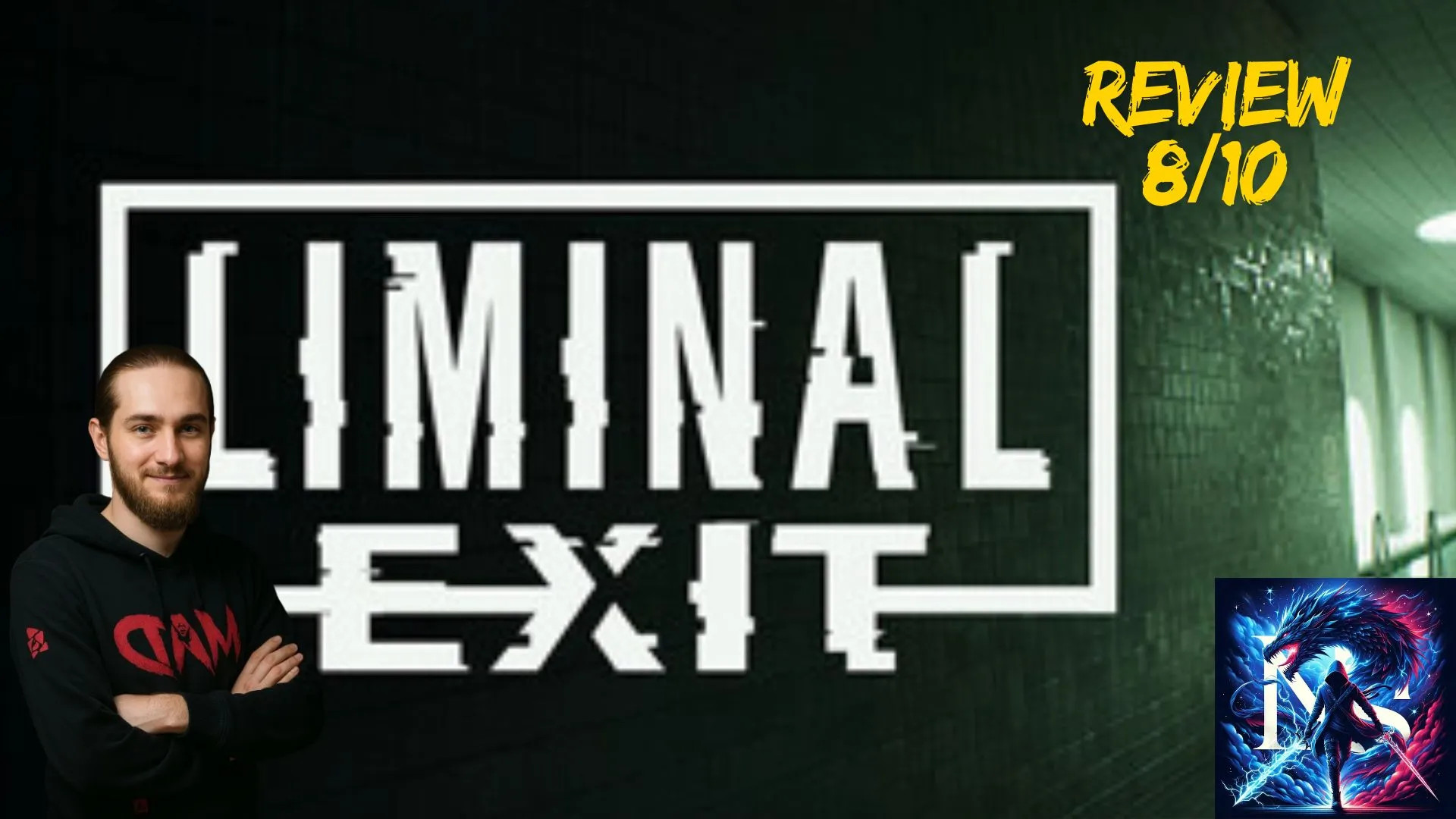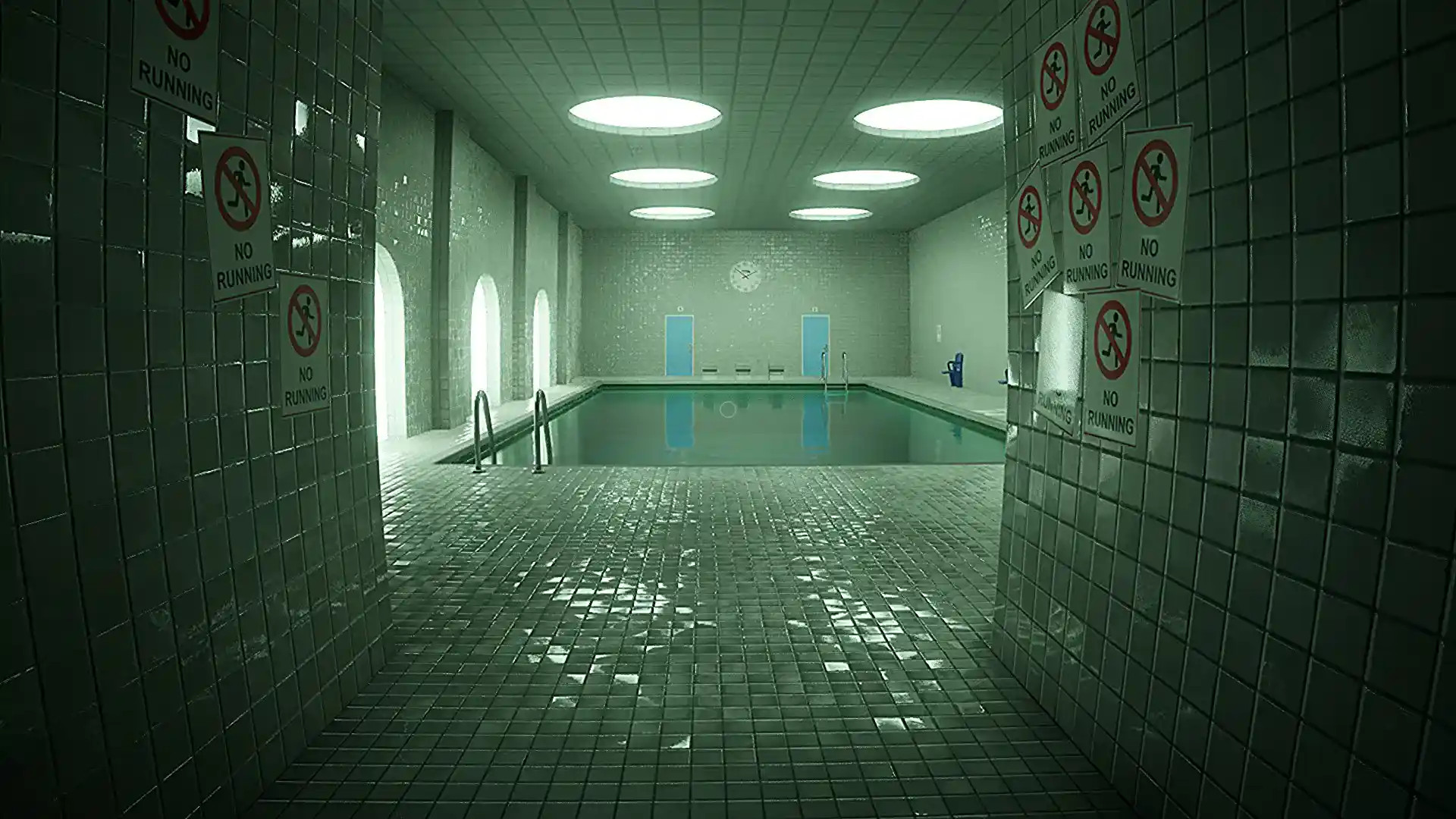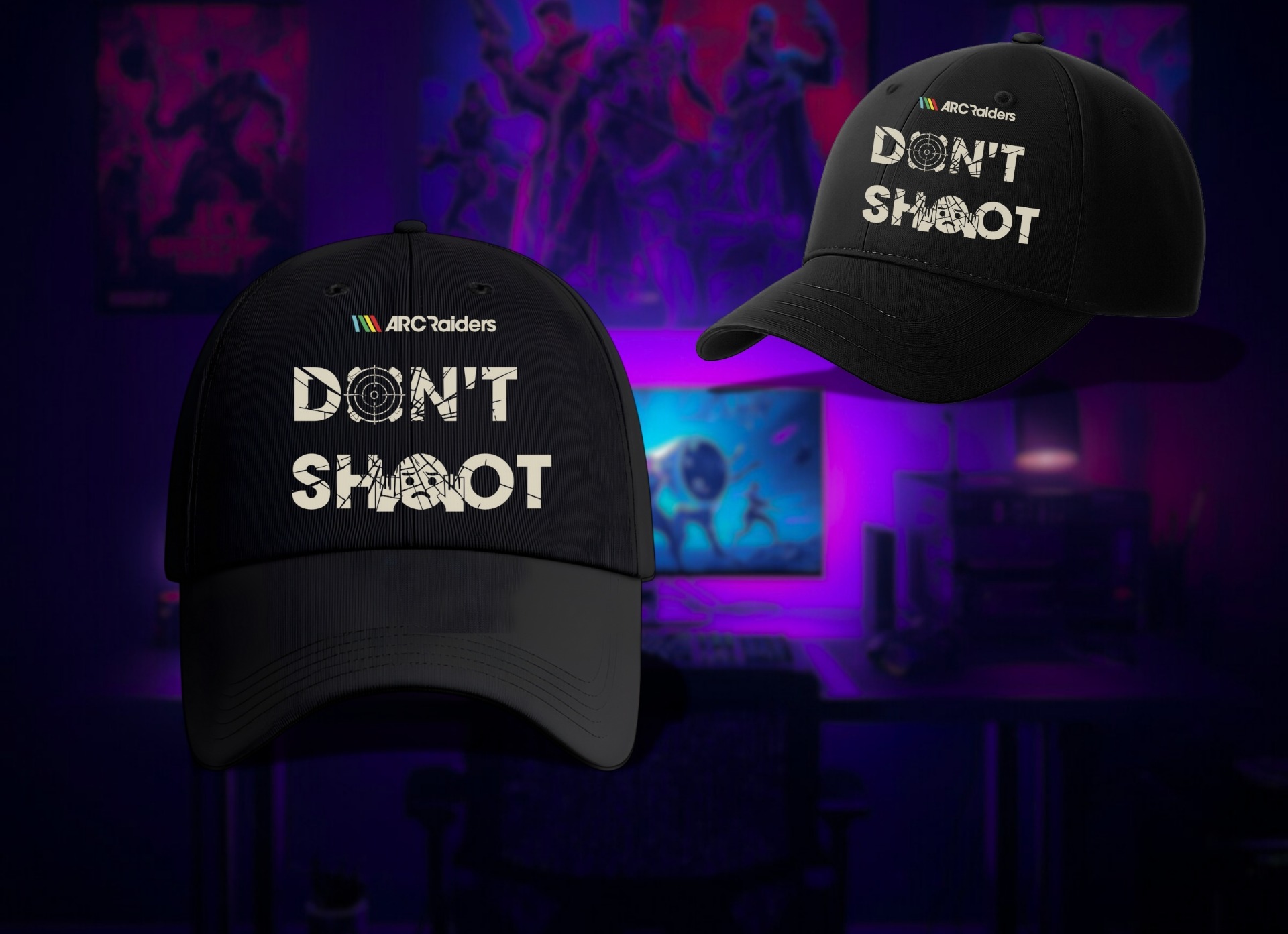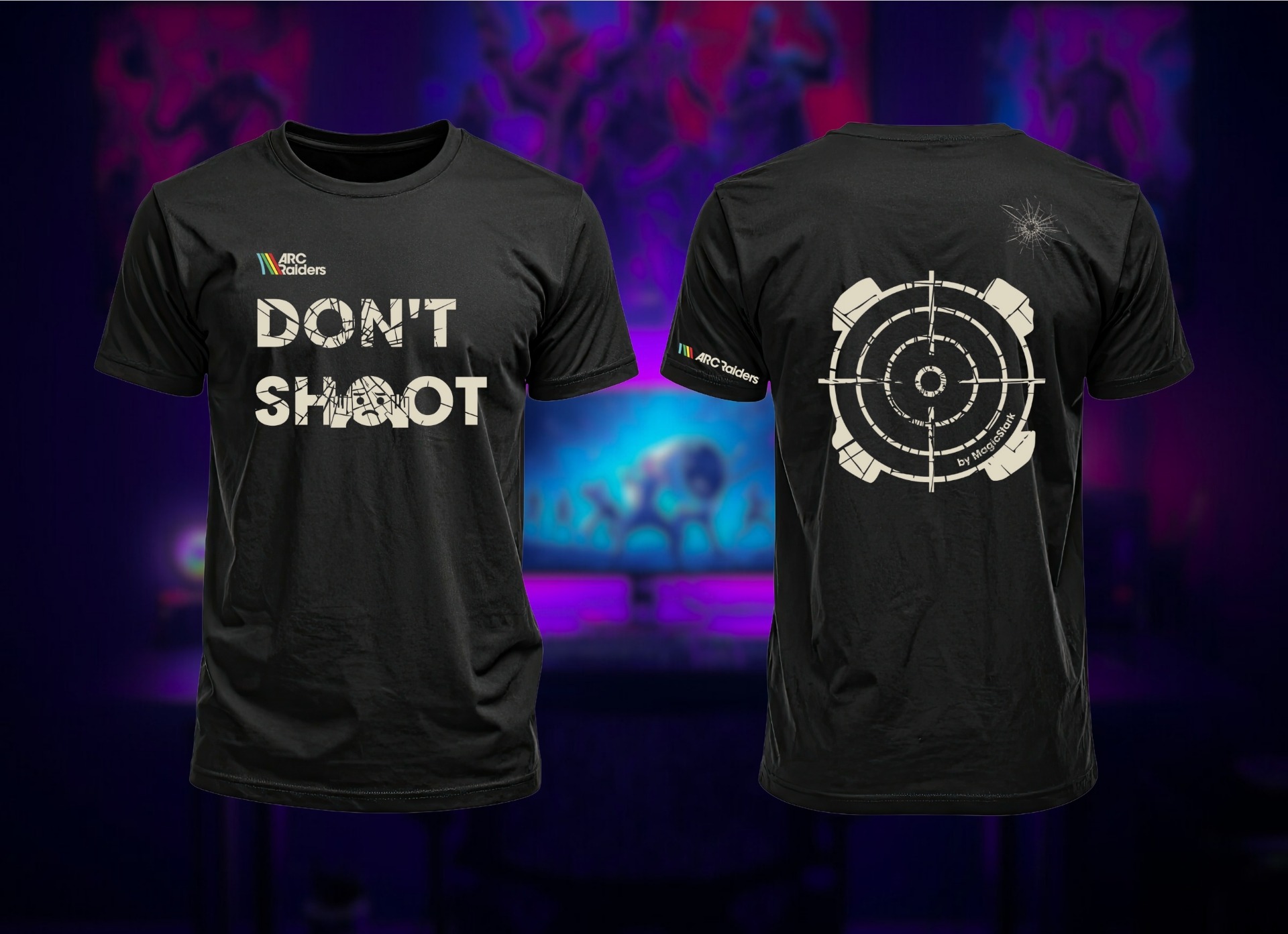Liminal Exit Review: A Haunting Journey Through Unsettling Reality
Liminal Exit is a surreal walking simulator that excels at psychological horror through atmospheric tension and anomaly detection gameplay. With stunning visuals and simple controls, it creates an unsettling experience that tests your attention to detail and nerve. While sound design could use improvement and the minimal story won't appeal to everyone, it delivers a gripping challenge for fans of psychological horror and liminal space aesthetics.

A Descent into Uncanny Valley Gaming 🌀
There is something deeply unsettling about places that feel familiar yet eerily off, and Liminal Exit leans into that discomfort with both feet. Developed and published by LittleRedDread, this surreal walking simulator traps you in looping corridors, flooded hallways, and unsettlingly empty rooms, testing not just your attention to detail but your sense of reality itself.
It looks and feels like it's inspired by The Exit 8 and Pools; it's a slow-burn dive into the uncanny, where every flicker, misplaced object, or warped shadow might be the only clue to escape. The liminal space horror genre has gained significant traction in recent years, tapping into deep-seated psychological discomfort with transitional spaces and architectural uncanniness.
Modern horror gaming has increasingly moved away from traditional jump scares toward psychological tension and atmospheric dread. Liminal Exit represents this evolution perfectly, creating unease through environmental storytelling and subtle visual cues rather than obvious frightening elements.
What makes liminal spaces so unsettling? These transitional areas - empty shopping malls, abandoned offices, endless hallways - trigger an uncanny valley effect in our brains, where familiar spaces feel wrong due to their emptiness or slight alterations.
Gameplay Mechanics and Core Loop 🔍
Liminal Exit throws you headfirst into a surreal, dreamlike world that plays on the uncanny and the unknown. The game doesn't hand-hold or over-explain itself, and you're dropped into what feels like an endless maze of liminal spaces where something always feels just a bit off. There's a constant sense of being watched or followed, and the deeper you progress in the game, the more reality seems to bend.
The plot of the game is super minimalistic and left open to interpretation, allowing players to create their own story through environmental clues, eerie anomalies, and unsettling transitions. The game is all about the atmosphere and the psychological tension it creates.
Core Gameplay Elements:
Observation and Detection
You're main focuses are observation, exploration, and decision making. You're tasked with identifying and reacting to subtle anomalies in the environment. Some are super obvious, and others you barely notice if you're not taking notice, which is a massive test of your attention to detail and memory.
Psychological Pressure Building
I found myself painting scenarios and double-guessing myself more than once, which sometimes worked in my favour and other times bounced me back to the start of the game, which made me more frustrated. There are some light puzzle-solving elements to the game, but the real challenge is navigating the unknown and keeping your nerves intact as the game will increasingly crank up the psychological pressure.
Anomaly Detection System:
| Anomaly Type | Difficulty Level | Detection Method | Player Response |
|---|---|---|---|
| Obvious Visual Changes | Easy | Clear object displacement | Immediate recognition |
| Subtle Alterations | Medium | Lighting changes, texture shifts | Careful observation required |
| Atmospheric Shifts | Hard | Sound changes, feeling shifts | Intuitive decision making |
| False Positives | Expert | Deliberate misdirection | Resist impulse reactions |
The brilliance of Liminal Exit's design lies in its ability to make players second-guess their own perceptions. The game creates a constant state of uncertainty where players must decide whether perceived changes are real anomalies or false alarms created by their own paranoia.
💡 Detection tip: Trust your first instincts but verify them carefully. The game often punishes both overconfidence and excessive hesitation, requiring a balance between quick decision-making and thorough observation.
Control Scheme and User Experience 🎮
The controls were super simplistic, which honestly made the game far more enjoyable. You've got your standard movement with W, A, S, and D, just like 99.9% of PC games, and your interactions were handled with a simple left click. Holding shift lets you run, which came in handy when you wanted to speed-run through the levels.

I found myself doing that more than once after making a dumb decision and being bounced back to the first level. The straightforward control scheme meant there was no learning curve, allowing me to focus entirely on the atmosphere on each level and decision-making without being bogged down by clunky mechanics.
Control Accessibility Features:
Streamlined Input System
- WASD movement - Industry standard locomotion
- Mouse look - Smooth camera control
- Left click interaction - Universal action button
- Shift to run - Speed adjustment for pacing
- No complex key combinations - Reduces cognitive load
Usability Benefits
The minimalist approach to controls serves the psychological horror experience by removing barriers between player and atmosphere. Complex control schemes would distract from the subtle environmental cues that form the core of the gameplay experience.
This design philosophy aligns with modern accessibility principles in gaming, ensuring that players with different motor abilities can engage with the content without mechanical frustration interfering with intended psychological effects.
Audio Design Analysis and Critical Assessment 🔊
I was a little on the fence with the sound design in this game. At times, it did a great job of building the immersion and adding a layer of tension that elevated that eerie atmosphere. Other times, though, I found myself wishing I could mute it altogether. The sounds your character makes when simply walking become repetitive, and if you make the mistake of touching water, the sound it makes you want to turn the game off. It was that off-putting.
Audio Strengths and Weaknesses:
| Audio Element | Effectiveness | Impact on Experience | Improvement Potential |
|---|---|---|---|
| Atmospheric Ambience | Strong | Builds tension effectively | More variety needed |
| Footstep Sounds | Weak | Repetitive and annoying | More surface variety |
| Water Interaction | Poor | Jarring and unpleasant | Complete redesign needed |
| Anomaly Audio Cues | Missing | Missed opportunity | Subtle implementation |
The walking noise added to the overall sense of frustration with the game, particularly when a wrong decision was made, creating a subtle psychological pressure that worked in the game's favour. I would have liked to hear some more distinct audio cues for anomalies, or even the occasional well-timed jump scare to shake things up a little. Overall, the audio was quite simplistic, which worked in the game's favour.
Suggestions for Audio Enhancement:
- Dynamic footstep system responding to different surface materials
- Subtle audio cues for anomaly detection without breaking immersion
- Improved water interaction sounds that enhance rather than detract
- Positional audio for enhanced spatial awareness
- Customizable audio mixing allowing players to balance different audio elements
Visual Presentation and Technical Excellence 🎨
I was genuinely mesmerised by the graphics in this game, which played a huge part in building a more eerie and immersive experience. The visual presentation was almost cinematic in quality at times; it barely felt like I was playing a game and watching something on TV. The environments looked stunning, and unless you got uncomfortably close to a wall or some tile textures, it was easy to forget you were in a virtual world.
Technical Visual Achievements:
Lighting and Atmosphere
The game's lighting system creates masterful mood establishment through strategic use of shadows, ambient lighting, and color temperature variations. Each environment feels distinctly unsettling while maintaining visual cohesion throughout the experience.
Environmental Design Excellence
- Photorealistic textures at medium-to-long distances
- Convincing architectural geometry creating believable spaces
- Subtle visual distortions that enhance uncanny valley effect
- Consistent art direction maintaining atmospheric immersion
Technical Limitations and Solutions:
One small gripe I had was the default head-bobbing effect, which quickly became distracting and nauseating. Not only was it annoying, but it also added an unnecessary layer of blur to the game, making fast movements disorienting. If you turned around too quickly, you'd often have to stop for a second just to regain visual clarity. Thankfully, I was able to switch it off in the settings, as it was something I was not a huge fan of.
Motion and Comfort Options:
| Setting | Default State | Recommendation | Impact |
|---|---|---|---|
| Head Bobbing | Enabled | Disable | Reduces motion sickness |
| Motion Blur | Enabled | Disable | Improves visual clarity |
| Mouse Sensitivity | Medium | Customize | Personal preference |
The inclusion of accessibility options demonstrates thoughtful design consideration for players with motion sensitivity. However, the default enabling of potentially problematic effects suggests room for improvement in initial user experience.
Why You Should Consider Liminal Exit 🌟
Compelling Reasons to Experience This Psychological Journey:
Unique Horror Experience
Liminal Exit offers a refreshing take on psychological horror that doesn't rely on traditional jump scares or gore. Instead, it builds tension through environmental storytelling and subtle psychological manipulation, creating a more sophisticated and lasting impact than conventional horror games.
Intellectual Challenge
The anomaly detection gameplay provides genuine intellectual engagement, requiring careful observation, pattern recognition, and decision-making skills. Unlike action-heavy games, Liminal Exit rewards thoughtful analysis and attention to detail.
Atmospheric Immersion
Few games achieve the level of atmospheric density that Liminal Exit maintains throughout its runtime. The consistent mood and environmental storytelling create a cohesive experience that stays with players long after completion.
Accessibility and Approachability
The simple control scheme and straightforward mechanics make Liminal Exit accessible to players of all skill levels, while the psychological depth provides sufficient challenge for experienced gamers.
Value Proposition Analysis:
- Moderate playtime with high replay value for anomaly hunting
- Unique aesthetic experience not replicated elsewhere
- Strong community discussion potential around interpretation and theories
- Affordable price point for delivered experience quality
💡 Purchase recommendation: Ideal for fans of psychological horror, walking simulators, and anyone interested in liminal space aesthetics. Best experienced in a quiet, dark environment for maximum atmospheric impact.
Performance and Technical Considerations 🔧
System Requirements and Optimization:
Liminal Exit demonstrates solid technical performance across various hardware configurations. The game's relatively simple geometry and efficient lighting systems ensure smooth performance even on modest gaming systems.
Performance Metrics:
- Consistent frame rates across most hardware configurations
- Minimal loading times between level transitions
- Stable memory usage without significant leaks
- Responsive input handling with minimal latency
Accessibility Features:
- Customizable motion effects for comfort
- Simple control remapping options
- Clear visual indicators for interactive elements
- Adjustable graphics settings for performance optimization
Final Verdict and Scoring 📊
Liminal Exit is a haunting, minimalist experience that thrives on discomfort, uncertainty, and eerie familiarity. It does not rely on traditional storytelling or jump scares to pull you into the game. It builds tension through atmosphere, subtlety, and psychological unease. With its simple controls and stunning visuals, it allows you to lose yourself in a world that feels wrong but also recognisable.
Whilst the sound design can be used with a little polishing and variety, and the head bobbing effect feels more distracting than immersive, the core gameplay loop of spotting anomalies and making calculated decisions offers a gripping challenge and an enjoyable experience.
Final Score Breakdown:
| Category | Score | Justification |
|---|---|---|
| Gameplay | 8/10 | Engaging anomaly detection with psychological depth |
| Visuals | 9/10 | Stunning cinematic quality with minor texture issues |
| Audio | 6/10 | Atmospheric but repetitive with some jarring elements |
| Atmosphere | 9/10 | Masterful psychological tension and liminal aesthetics |
| Accessibility | 8/10 | Simple controls with good customization options |
| Value | 8/10 | Unique experience at reasonable price point |
Overall Score: 8/10 ⭐
The Good ✅
- Visually stunning and cinematic presentation
- Strong psychological tension and eerie atmosphere
- Simple, intuitive controls that don't interfere with immersion
- Engaging anomaly-based gameplay loop with intellectual challenge
- Unique take on psychological horror without cheap scares
- Excellent accessibility options for motion-sensitive players
The Bad ❌
- Repetitive and occasionally off-putting sound design
- Head-bobbing and motion blur can be disorienting by default
- Minimal story may not appeal to narrative-focused players
- Limited replayability once patterns are learned
- Some texture quality issues at close inspection distances
FAQ
Q: How long does it take to complete Liminal Exit?
A: The game typically takes 2-4 hours to complete, depending on your attention to detail and how often you need to restart due to wrong decisions.
Q: Is Liminal Exit suitable for players new to horror games?
A: Yes, the game focuses on psychological tension rather than jump scares or graphic content, making it more accessible for horror newcomers.
Q: Can I turn off the motion effects that cause nausea?
A: Yes, both head bobbing and motion blur can be disabled in the settings menu to improve comfort for motion-sensitive players.
Q: Is there any replay value after completing the game?
A: Limited replay value exists in trying to spot anomalies you might have missed, but the core experience remains largely the same on subsequent playthroughs.
Q: What makes this different from other walking simulators?
A: Liminal Exit focuses on active observation and decision-making rather than passive exploration, with consequences for wrong choices that reset progress.
Q: Are there multiple endings or story paths?
A: The game features minimal narrative with interpretation left to the player, so multiple "endings" exist primarily through personal interpretation.
Q: What are the minimum system requirements?
A: The game runs well on modest hardware due to its optimized design, though specific requirements should be checked on the Steam page.
Q: Is the game worth buying at full price?
A: For fans of psychological horror and liminal space aesthetics, the unique experience justifies the purchase, especially given the reasonable price point.
Q: How does this compare to The Exit 8 and Pools?
A: Liminal Exit shares the liminal space aesthetic but focuses more on environmental anomaly detection rather than pure atmospheric wandering.
Q: Are there any accessibility options for colorblind players?
A: The game relies primarily on structural and positional changes rather than color-based cues, making it generally accessible for colorblind players.
Related Articles:
Community and Newsletter
Want to be the first to know about the latest news? Join our CZ/SK community Discord where you'll find the freshest updates in the #herní-novinky channel! 🎮💥 You can also join discussions, find new friends, fellow players, participate in GIVEAWAYS and win peripherals or game keys that interest you! 🔑👾
Thanks to your support, I can create quality gaming content and bring you the latest information from the gaming world 🎮. Some links in my articles may be affiliate links - when you shop through them, I receive a small commission without changing the price for you. All products and games I recommend are carefully selected and personally tested. This income helps me remain an independent creator and bring you objective reviews and opinions. If you like my content, you can also support me through Twitch membership, YouTube or Discord Nitro boost. Thank you for your support! - MagicStark 💎

Daniel Haša
🎮 Streamer | 🎥 Content Creator | 📈 SEO Specialist | 🎮 Gamer & Beta Tester | ✍️ Copywriter | 🧠 AI user
Daniel is a passionate gamer and content creator who specializes in gaming reviews, guides a Gaming news from all over the world. He regularly streams on Twitch, creates detailed YouTube videos, and brings exclusive articles to magicstark.cz. He covers the latest titles, provides in-depth gaming analyses, and helps players get the most out of themselves.























